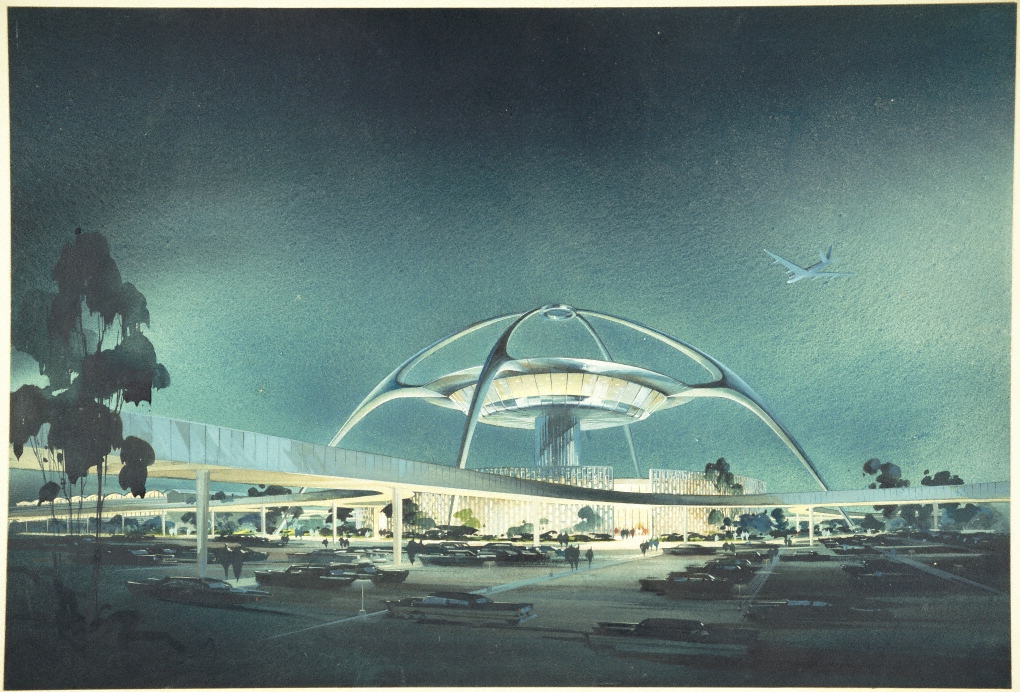
Today, architects are celebrities. Brad Pitt and Moby align themselves with architectural projects, and Frank Gehry appears in The Simpsons. Trophy architects are in demand to provide blueprints for stadiums, government buildings, museums, and billionaire homes. These trophy architects can name their price and branch out as artists and designers of everything from jewelry to gallery exhibitions. But does the work of architects really matter in our daily lives? Do all of the inventive flourishes found in the new wave of buildings dotting our cities change the livelihood of their inhabitants, or are they merely self-contained monuments to an era and its egos? As the Getty’s Pacific Standard Time presents “Modern Architecture in L.A.”, a wide-ranging look at the region’s modern architectural heritage and the contributions of L.A. architects to the world, Zócalo and the Getty Museum present a half-day conference exploring the impact of architecture on the present and future.
Do Architects Really Shape Cities?
Moderated by John King, Architecture Critic, San Francisco Chronicle
Sixty years ago we had such high hopes for architecture. Reshaping our physical spaces of work and residency was supposed to reshape our minds. Buildings would be machines for living, and humans would adopt habits of work and play as clean and sensible as the spare boxes we built amid green plazas. But can architecture and design shape the future beyond the superficialities of line and shape? Did the futuristic visions of the 1950s and ’60s prove to have any merit, or have their designs become kitschy reminders of failed architectural planning? Architect Thom Mayne of Morphosis, Project for Public Spaces founder and president Fred Kent, and architect Válery Augustin of Dn/A visit Zócalo to ponder the role of architects in shaping cities in the past and today and examine what we’ve learned—or failed to learn—from our ambitious visions.
How Do People Re-Invent Spaces?
Moderated by Peter Tokofsky, Education Specialist, The Getty Museum
Despite the best—or perhaps most dictatorial—intentions of architects and planners, inhabitants of buildings and spaces rarely follow the instruction manual. Good luck preventing them from putting a flowerpot on the steps or a folding chaise on the lawn or lace curtains in the window. As soon as the photographers from Architectural Digest have left, we have re-cluttered our rooms and joined the dog on the sofa. We agree that the sculpture fountain outside looks best without people sitting on the ledge around it eating lunch out of Styrofoam deli boxes, but we also think it’s a great place to have lunch. Whether we’re adding a new coat of paint or doing something much more radical, we users of buildings show inexhaustible inventiveness when it comes to making ourselves comfortable—and it’s often at odds with the intentions of architects. Photographer and sociologist Camilo José Vergara, California Historical Society executive director Anthea Hartig, architect Peter Tolkin, and UC Riverside cultural historian Catherine Gudis visit Zócalo to explore the tug of war between the architect’s vision and the way we choose to use our homes, offices, and public spaces.
Who Designs Tomorrow’s Los Angeles?
Moderated by Greg Goldin, Curator, A+D Museum
As Los Angeles confronts the challenges of the future, discussion inevitably returns to the question of up or out. Will “elegant density” replace the Southern California dream of suburban homes and yards? But city planning involves much more than building heights. If the look and layout of Los Angeles must change in order for the city thrive, what changes should there be? And who gets to decide on them—or design them? Perhaps we’ll all live in Plexiglas houses and travel to work by dirigible, or perhaps we’ll just muddle through with cheaper construction materials, taller strip malls, worse traffic, and more potholes. USC School of Architecture dean Qingyun Ma, Blade Runner designer and visual futurist Syd Mead, and urban planner James Rojas visit Zócalo to imagine the L.A. of tomorrow and put forward some idea on who will get to design it.
This event is produced in partnership with Pacific Standard Time’s Modern Architecture in L.A., an initiative of the Getty.
Photo: LAX, Theme Building; perspective view, 1961. Charles Luckman, William Pereira, Welton Becket, and Paul R. Williams.
The Takeaway
Architecture Does Matter—Even In Crazy L.A.
But How To Use It For Our Benefit Is Another Question
We accord both architects and their buildings celebrity status, but how much do blueprints ultimately influence the way we live or the way our cities develop? Architects, planners, designers, and …






